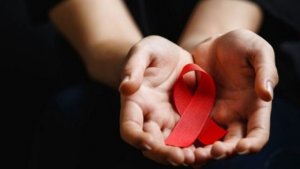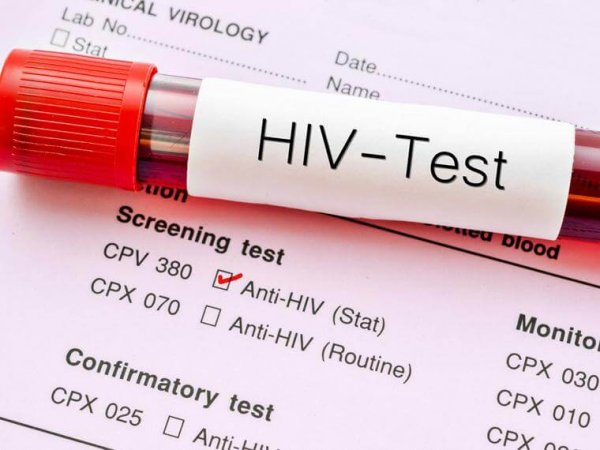World AIDS Day: Prevention, Education and Commitment


Written and verified by the psychologist Valeria Sabater
World AIDS Day allows us to do something that goes beyond simply raising awareness of this disease. Every December 1st, we celebrate this event in order to support global efforts to prevent new infections. We also do it to offer respect, closeness, and support to those who have to face life as people who are HIV positive.
Something that the Ministries of Health, the United Nations agencies, and the governments of each country are trying to transmit is the need to accept greater responsibility in this area. This is a double responsibility.
On the one hand, we know that the number of infected people continues to be alarming. According to WHO data, experts estimate that almost 38 million people are living with AIDS.
On the other hand, however, there’s an element that’s just as worrying: nearly 8 million people are infected and aren’t aware of it. This is because HIV doesn’t usually show symptoms. People often think that it’s something that only happens to other people. Thus, as a result, they don’t take adequate sexual health measures.
Thus, one of the goals of health institutions around the world is to reach the “90-90-90” goal by the end of 2020. In other words, to increase early detection of the disease to 90%, to increase treatment with antiretroviral drugs to 90%, and for 90% of these patients to have a suppressed viral load.
Will we achieve this? There’s only one year left and this goal requires two indispensable factors: economic investment and individual awareness. UNAIDS, the Joint United Nations Program on HIV and AIDS, fears that we won’t achieve this goal.

World AIDS Day: the importance of not letting your guard down
Two years ago, in a political declaration adopted by the member states of the United Nations, experts made a statement that should cause us to reflect deeply. They said that either we take stronger action or HIV and AIDS will be a major public health problem by 2030.
We’re facing a virus that has had, and is having, a great impact in many parts of the world. Not only in sub-Saharan Africa, but also in Latin America, the Caribbean, Eastern Europe, and Central Asia, where the number of infected people has increased considerably in recent years.
Data from the latest epidemiological surveillance report, for example, show that Spain is one of the Western European countries where infections have increased the most. Moreover, experts say that around 18 percent of infected persons don’t yet know that they’re HIV carriers. In addition to this, 48 percent are diagnosed late.
World AIDS Day should motivate us to shape three very clear commitments. The first is that we don’t let down our guard. The HIV virus’s main route of infection is still through unsafe sexual practices.
The second is the need to promote better public policies to prevent and detect the disease in its first phase. The third aspect is, without a doubt, to treat infected people with respect and support.
Let us be aware, then, of these basic aspects that underpin everything that relates to HIV.

HIV and AIDS aren’t the same
HIV is the virus that causes AIDS and stands for human immunodeficiency virus. This is a type of retrovirus that attacks the immune system. It can make a person suffer from all kinds of infections, in addition to the added risk of developing deadly cancers.
HIV and AIDS aren’t the same. AIDS (acquired immune deficiency syndrome) is the disease that develops as a result of having HIV, and is when the patient has a very low number of CD4 cells or T cells. These are the cells that protect us from infections. The most dangerous thing is to enter this phase not having had treatment for the HIV virus. After contracting HIV and not receiving any treatment, a person will normally develop full-blown AIDS after about 10 years.
How do you get HIV?
This type of retrovirus has three very specific routes of transmission:
- Parenteral. This is a type of transmission that results from exposure to blood or other tissues. In this case, we’re talking about situations such as receiving a transfusion of infected blood, sharing needles, or accidentally pricking oneself with them while handling medical utensils, etc.
- Sexual. This is the most common cause of HIV transmission. It arises as a result of unprotected sexual practices where a person is exposed to the semen or vaginal secretions of an infected person.
- Perinatal infection. In this case, the infection is passed from an infected mother to her child, either during pregnancy itself, at birth, or even while breastfeeding.
However, it’s also important to emphasize how the virus isn’t transmitted:
- Through kissing.
- By sharing glasses and other food utensils.
- Through hugs or caresses.
- By using public services.
- Through sweat or tears.
- Through insect bites.
- By stroking animals.
How’s HIV treated?
There’s currently no cure for this disease. However, a person can have a normal life expectancy thanks to antiretroviral drugs. This type of treatment involves daily administration of different drugs that serve the following purposes:
- Reducing the concentration of HIV in the body.
- Preventing HIV from developing into AIDS.
- Reducing the risk of transmission of the disease.
- Protecting the immune system.
The importance of getting tested for HIV
On thinking about World AIDS Day, this should encourage you to become more aware of the disease, and not only regarding adequate protective measures. Having a test is a must, something that should be part of your routine medical care. Moreover, medical institutions recommend that people between the ages of 13 and 64 should be tested at least once, and even more so if they are in any of the more at-risk groups.
All you have to do is talk to your doctor and they’ll organize a blood test for you. They can give you the results in a very short period of time. Thus, our advice to you is that you don’t neglect this important step. Early detection guarantees a better quality of life and will also help to prevent other people from getting infected in the event of the test results being positive.
World AIDS Day allows us to do something that goes beyond simply raising awareness of this disease. Every December 1st, we celebrate this event in order to support global efforts to prevent new infections. We also do it to offer respect, closeness, and support to those who have to face life as people who are HIV positive.
Something that the Ministries of Health, the United Nations agencies, and the governments of each country are trying to transmit is the need to accept greater responsibility in this area. This is a double responsibility.
On the one hand, we know that the number of infected people continues to be alarming. According to WHO data, experts estimate that almost 38 million people are living with AIDS.
On the other hand, however, there’s an element that’s just as worrying: nearly 8 million people are infected and aren’t aware of it. This is because HIV doesn’t usually show symptoms. People often think that it’s something that only happens to other people. Thus, as a result, they don’t take adequate sexual health measures.
Thus, one of the goals of health institutions around the world is to reach the “90-90-90” goal by the end of 2020. In other words, to increase early detection of the disease to 90%, to increase treatment with antiretroviral drugs to 90%, and for 90% of these patients to have a suppressed viral load.
Will we achieve this? There’s only one year left and this goal requires two indispensable factors: economic investment and individual awareness. UNAIDS, the Joint United Nations Program on HIV and AIDS, fears that we won’t achieve this goal.

World AIDS Day: the importance of not letting your guard down
Two years ago, in a political declaration adopted by the member states of the United Nations, experts made a statement that should cause us to reflect deeply. They said that either we take stronger action or HIV and AIDS will be a major public health problem by 2030.
We’re facing a virus that has had, and is having, a great impact in many parts of the world. Not only in sub-Saharan Africa, but also in Latin America, the Caribbean, Eastern Europe, and Central Asia, where the number of infected people has increased considerably in recent years.
Data from the latest epidemiological surveillance report, for example, show that Spain is one of the Western European countries where infections have increased the most. Moreover, experts say that around 18 percent of infected persons don’t yet know that they’re HIV carriers. In addition to this, 48 percent are diagnosed late.
World AIDS Day should motivate us to shape three very clear commitments. The first is that we don’t let down our guard. The HIV virus’s main route of infection is still through unsafe sexual practices.
The second is the need to promote better public policies to prevent and detect the disease in its first phase. The third aspect is, without a doubt, to treat infected people with respect and support.
Let us be aware, then, of these basic aspects that underpin everything that relates to HIV.

HIV and AIDS aren’t the same
HIV is the virus that causes AIDS and stands for human immunodeficiency virus. This is a type of retrovirus that attacks the immune system. It can make a person suffer from all kinds of infections, in addition to the added risk of developing deadly cancers.
HIV and AIDS aren’t the same. AIDS (acquired immune deficiency syndrome) is the disease that develops as a result of having HIV, and is when the patient has a very low number of CD4 cells or T cells. These are the cells that protect us from infections. The most dangerous thing is to enter this phase not having had treatment for the HIV virus. After contracting HIV and not receiving any treatment, a person will normally develop full-blown AIDS after about 10 years.
How do you get HIV?
This type of retrovirus has three very specific routes of transmission:
- Parenteral. This is a type of transmission that results from exposure to blood or other tissues. In this case, we’re talking about situations such as receiving a transfusion of infected blood, sharing needles, or accidentally pricking oneself with them while handling medical utensils, etc.
- Sexual. This is the most common cause of HIV transmission. It arises as a result of unprotected sexual practices where a person is exposed to the semen or vaginal secretions of an infected person.
- Perinatal infection. In this case, the infection is passed from an infected mother to her child, either during pregnancy itself, at birth, or even while breastfeeding.
However, it’s also important to emphasize how the virus isn’t transmitted:
- Through kissing.
- By sharing glasses and other food utensils.
- Through hugs or caresses.
- By using public services.
- Through sweat or tears.
- Through insect bites.
- By stroking animals.
How’s HIV treated?
There’s currently no cure for this disease. However, a person can have a normal life expectancy thanks to antiretroviral drugs. This type of treatment involves daily administration of different drugs that serve the following purposes:
- Reducing the concentration of HIV in the body.
- Preventing HIV from developing into AIDS.
- Reducing the risk of transmission of the disease.
- Protecting the immune system.
The importance of getting tested for HIV
On thinking about World AIDS Day, this should encourage you to become more aware of the disease, and not only regarding adequate protective measures. Having a test is a must, something that should be part of your routine medical care. Moreover, medical institutions recommend that people between the ages of 13 and 64 should be tested at least once, and even more so if they are in any of the more at-risk groups.
All you have to do is talk to your doctor and they’ll organize a blood test for you. They can give you the results in a very short period of time. Thus, our advice to you is that you don’t neglect this important step. Early detection guarantees a better quality of life and will also help to prevent other people from getting infected in the event of the test results being positive.
This text is provided for informational purposes only and does not replace consultation with a professional. If in doubt, consult your specialist.







